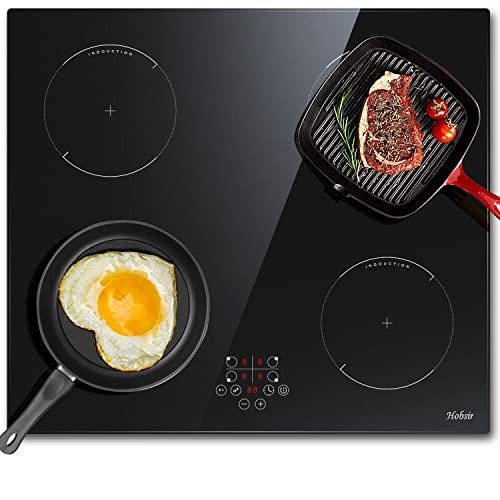The Essential Guide to Oven Hobs: Selecting the Right One for Your Kitchen
When it pertains to home cooking, couple of devices are as important as the oven hob. This flexible tool is necessary for a range of cooking methods-- boiling, frying, simmering, and sautéing. Offered the myriad of choices available on the marketplace, picking the perfect oven hob for one's kitchen can be intimidating. This article aims to offer a thorough appearance at oven hobs, discussing their types, functionalities, advantages, disadvantages, and essential factors to consider when purchasing one.
Comprehending Oven Hobs
Oven hobs, commonly called cooktops, are flat cooking platforms that include burners or heating elements. Ovens Online can be integrated with an oven or stand-alone. The choice of an oven hob can substantially affect cooking effectiveness and convenience.
Types of Oven Hobs
Oven hobs come in different types, each with distinct functions. Below are the most typical types available:
| Type | Description | Benefits | Drawbacks |
|---|---|---|---|
| Gas Hobs | Utilizes natural gas or gas | Instant heat and precise temperature control; works well with all pots and pans | Requires a gas connection; less energy-efficient than electric |
| Electric Hobs | Usage electric coils or radiant heat | Easy to clean up; consistent heat circulation | Slower to warm up; can be less responsive than gas |
| Induction Hobs | Utilizes magnetic fields to heat cookware straight | Quick cooking; energy-efficient; easy to tidy | Needs compatible cookware; normally more pricey |
| Ceramic Hobs | Flat glass-ceramic surface with radiant heat | Visually pleasing; simple to clean | Can be prone to scratching; slower to heat than induction |
Secret Features of Oven Hobs
When selecting an oven hob, a number of features ought to be taken into consideration:
- Size & & Configuration: Available in various sizes, oven hobs can accommodate multiple pots and pans. Standard options are typically 30, 36, or 48 inches wide.
- Power Output: Look for hobs with differing power levels for different cooking processes. High-powered burners are outstanding for boiling, while lower-power ones can be used for simmering.
- Control Types: Choose between knob controls and touch controls. Knobs provide tactile feedback, while touch controls provide smooth designs and additional performances.
- Security Features: Options like automatic shut-off, kid locks, and flame failure devices are crucial for avoiding accidents.
- Alleviate of Cleaning: Choose models with smooth surfaces or detachable parts for simple upkeep.
Advantages and Disadvantages
Understanding the benefits and drawbacks of various oven hobs can assist in making an informed decision.
Benefits
- Flexibility: Suitable for different cooking approaches, from boiling to frying.
- Speed: Many hobs heat rapidly, especially induction models.
- Energy Efficiency: Some options, like induction hobs, can decrease energy consumption compared to standard techniques.
Drawbacks
- Expense: High-end models, particularly induction hobs, can be pricey.
- Installation: Gas hobs need professional setup and a gas supply, which may incur additional expenses.
- Compatibility: Not all cookware deals with induction hobs, demanding extra purchases.
Buying Considerations
When picking an oven hob, consider the following factors:
- Cooking Style: Assess how typically and what kind of cooking you do to determine the very best hob type.
- Kitchen Layout: Measure your kitchen area to make sure the hob fits and matches other devices.
- Spending plan: Determine just how much you want to spend. Consider setup and the expense of any essential pots and pans.
- Energy Source: Evaluate the schedule of gas or the electrical capability of your kitchen to choose between gas and electric choices.
Frequently Asked Questions About Oven Hobs
Q1: What is the difference in between a cooktop and an oven hob?A cooktop and an oven hob usually describe the same device. However,"cooktop "is a broader term that includes both standalone hobs and integrated systems with ovens. Q2: Can I utilize any pots and pans on an induction
hob?No, induction hobs require ferrous( magnetic)pots and pans
to work. Fan Oven Sales and pans made from product like stainless steel or cast iron appropriates, while aluminum and copper without magnetic properties are not. Q3: How do I tidy my oven hob properly?Cleaning techniques depend on the kind of hob.
Generally, a wet fabric and mild detergent work for glass-ceramic surfaces, while a specific hob cleaner is ideal for induction. Gas hobs require taking apart burners for extensive cleaning. Q4: Are induction hobs safe for cooking?Yes, induction hobs are usually much safer than gas hobs as they do not produce an open flame,and the surface cools down quickly. Many models likewise feature child safety locks. Q5: How often must I replace my oven hob?The lifespan of an oven hob varies based upon the type and usage. Generally, they last around 10 to 15 years.
Regular upkeep can help extend this period. Picking the perfect oven hob for your home can considerably improve your cooking experience. With Fan Oven Sales of the types, functions, advantages, and factors to consider, anybody can make an educated choice. From the high heat of gas to the performance of induction, there is a hob suited to every cooking need. Eventually, the best oven hob can transform cooking from an ordinary task into an art form, making it possible for cooking lovers to develop scrumptious meals with ease.

